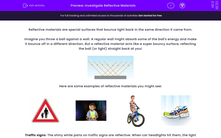Reflective materials are special surfaces that bounce light back in the same direction it came from.
Imagine you throw a ball against a wall. A regular wall might absorb some of the ball's energy and make it bounce off in a different direction. But a reflective material acts like a super bouncy surface, reflecting the ball (or light) straight back at you!
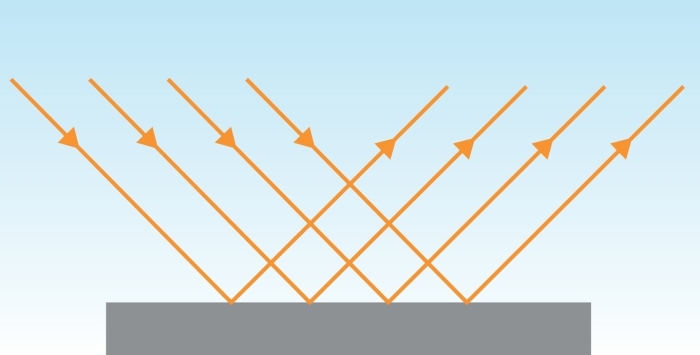
Here are some examples of reflective materials you might see:
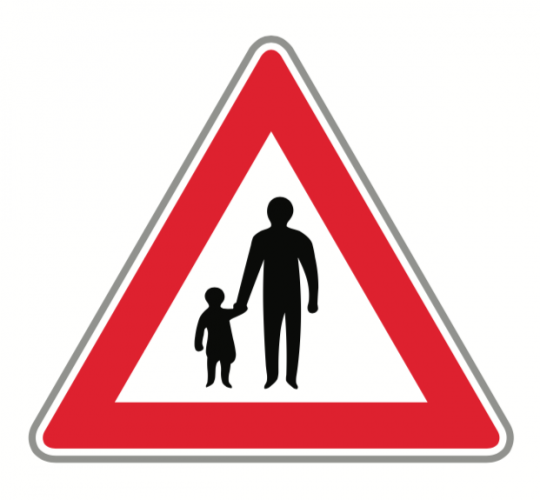 |
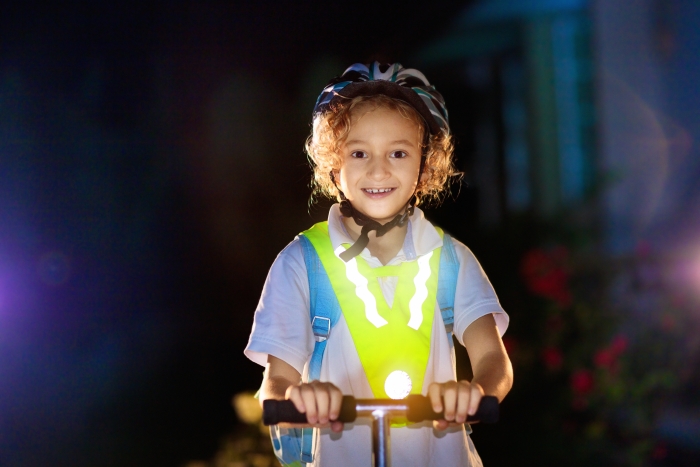 |
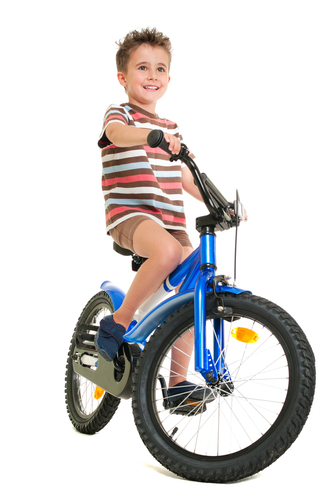 |
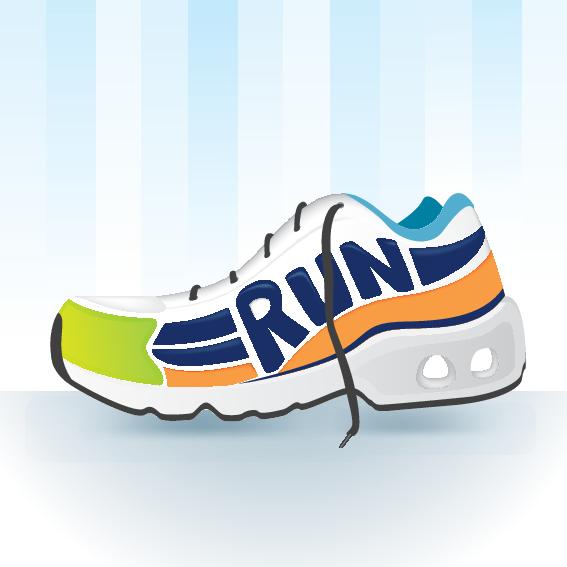 |
Traffic signs: The shiny white parts on traffic signs are reflective. When car headlights hit them, the light bounces right back towards the car, making the sign super bright and easy for drivers to see at night.
Safety vests: The stripes on safety vests are also reflective. When light from car headlights hits them, it bounces back towards the car driver, making the person wearing the vest much more visible in low light conditions.
Bicycles: Many bikes have reflective stickers or tape on their wheels and frames. When car headlights hit these, the light bounces back, making the bike easier for drivers to see at night.
Running shoes: Some running shoes have reflective bits on them. This helps runners to be seen by drivers when they're out exercising at night.
So, whenever you see something shiny that seems to 'glow' when light hits it, it's probably a reflective material, helping to keep people and things safe at night!
Remember that light moves in waves and travels in straight lines.
Flat, shiny surfaces bounce it back or reflect well; bumpy, dull or uneven surfaces bounce the light back in all different directions and absorb a lot of light (they aren't great for reflecting!)
In this activity, we will be looking at different materials and deciding whether or not they are good reflectors!

